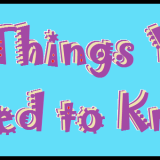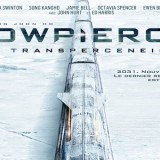Have You Thought About This? : The Three-Pointed Balancing Act
The more I review, the more a trifecta of necessary elements calls my attention and gets my mind stirring.
You’ve read them. The “un-successes”. The moments of a novel that are all imagery — where the pastoral appreciator takes whole chapters to tell you the way the land unfolds, and you hope your English teacher won’t see it in your eyes that you skipped ahead to find the next bit of dialogue. The essays that are all philosophy — where the intent academic uses language so lofty and abstract that you can’t find the place to hook your fingers in and grab hold, and you just want to go watch some TV to get back to the real world. The poems that are all blunt narrative — where the well-meaning amateur slips in line breaks that seem arbitrarily chosen to turn a diary entry into something more socially acceptable, but you can’t help feeling they missed a deeper point, and you’d like to wash your eyes out with some education.
If you push beyond the sense that “this isn’t working”, you sometimes find yourself asking for more with a bowl held up and a pitifully hungry look on your face. “Please, Steinbeck. I love you, but I’m thirsting for some people here.” “Yes, Ayn Rand, I want to follow what you’re saying, but I have no concrete point of reference any more.” “Look, Jenny, I don’t want to upset you, but is there some deeper meaning behind this retelling of your day?”
When you’re force fed one, you find yourself sorely missing another, and you realize that there are three sisters that should pull the strings behind any engaging piece of writing.
Imagery. Narrative. Philosophy.
These are three ways in which we engage the world, and thus three ways an author can engage with us in writing.
From the moment we are born, we are collecting images for our visual library. We have moments: sunsets, raindrops, stubble on a loved one’s face. We process an insane amount of information every day, and as such it’s perhaps the easiest way for an author to bring reality to the work they are crafting. By calling up a memory of an image we’ve seen before, or by conjuring a new image piecemeal from the shades of those we know, the author activates our imagination and gives us a concrete anchor in our mind to stick to.
But constantly static imagery doesn’t inspire. We live our life along a time line. We unfold our own narrative. We relive these moments and sequences by retelling these narratives to friends. Thus we naturally look for the same movement, conflict, and resolution that occurs in our lives in the stories we read, however warped from un-spiced reality.
And yet day to day and week to week and month to month without some underlying goal, meaning, want, or purpose seems empty and uninteresting. We ponder our lives, and we ponder with other people, so again, we are naturally engaged when an author opens the discussion of the way we should conduct relationships with family, or the right choice to make at an important crossroads, or any number of general subjects.
Except a wave of philosophy means nothing if we never catch the crest to ride it back to shore, if we’re left wandering in abstract concepts without a shout out to the concrete and physical world we’re living in.
You can see the cycle.
Have you thought about this? Do you keep these three sisters close by you when you write to make sure you’ve struck the right balance? When you notice a piece that is missing something, can you readily name the missing piece as one of these three categories? Or do you think I’ve called the family too small, and they have other sisters that want to play, too?











